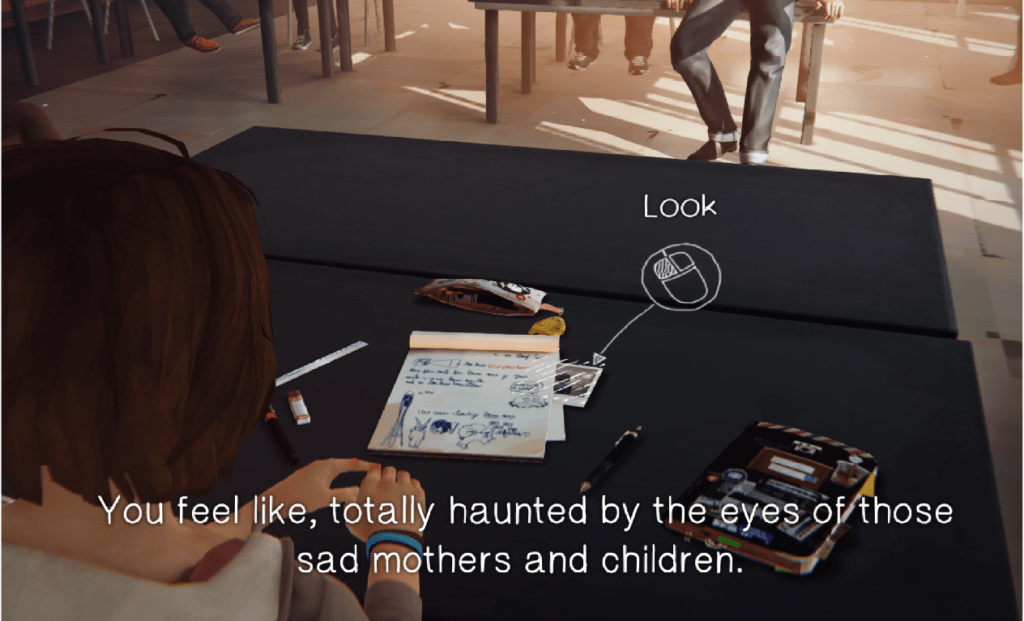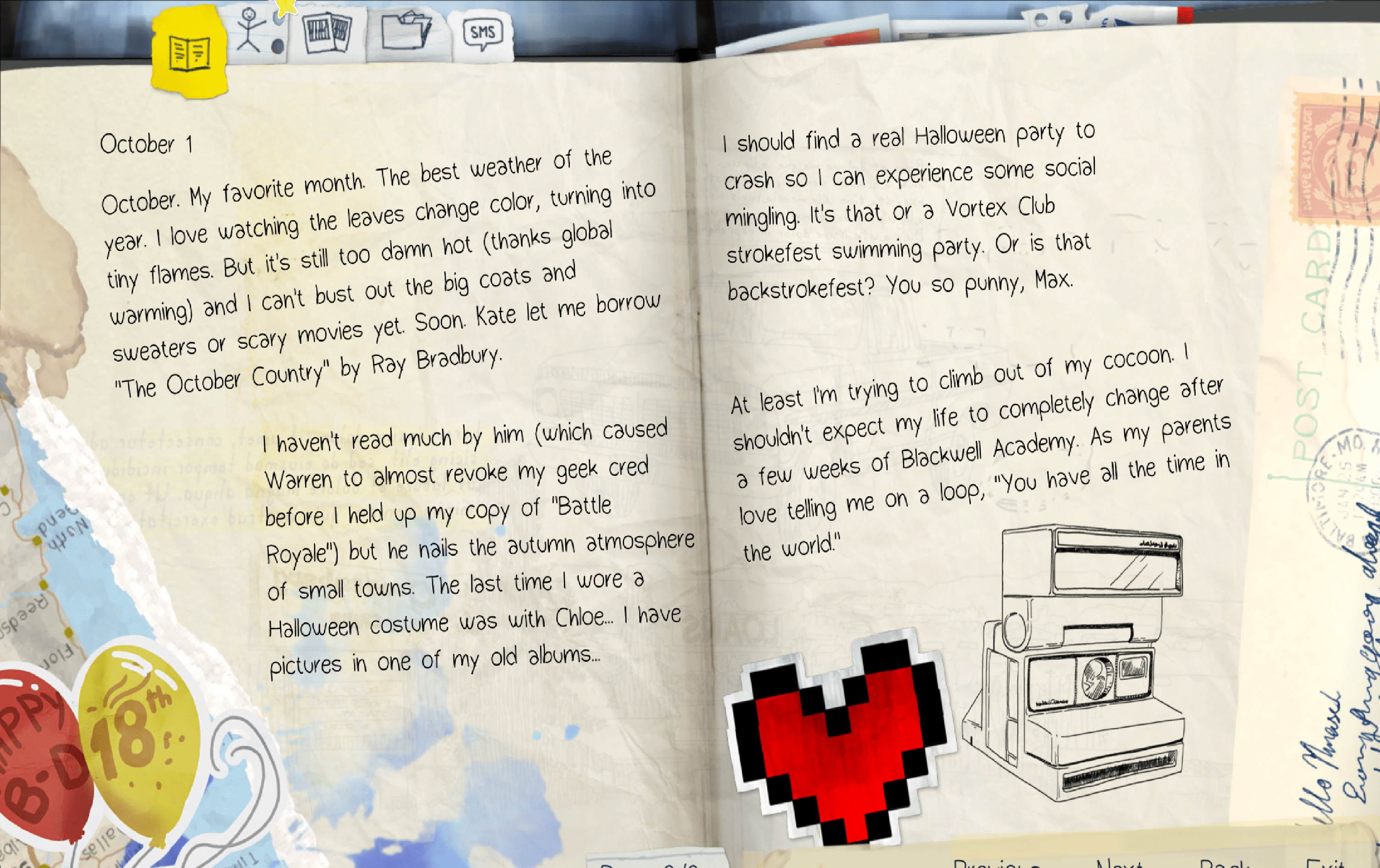This week, I decided to play Life is Strange. The first episode was available for free on the Steam website. The game was created by Dontnod Entertainment, and is intended for audiences of older teens and adults, due to its mature themes. It is released on multiple platforms, but I played the desktop version available for iOS download.
The narrative is woven into the mystery of the game through several mechanics. First, the game includes a single player driven narrative, where our protagonist is the only character within the game whose inner monologue we are exposed to. We are also only able to control the actions of the protagonist, which lends itself to a feeling of mystery about the intentions and levels of awareness of the other characters in the game.
I also really enjoyed the time rewind mechanic throughout this game, which allowed me as a player to go back and make different choices that lead to different outcomes in the game. I wasn’t able to play the game for as long as I’d like, but, from the beginning, there were small choices to make that each revealed small pieces of information. This contributes to the overall feeling of mystery created in the game, because it makes the narrative an exploration instead of a linear progression of story.


The mystery is also carried by the overall visual and auditory atmosphere of the game. The game begins with a loud storm that thrusts the protagonist into an immediate sense of physical danger. The mystery is only intensified when the storm is immediately juxtaposed by a calm classroom setting. While this puts our protagonist in a state of immediate physical security, the mystery now feels mental – where is she, how did she get there, and was the previous scene a mere hallucination?
The game employs both loops and arcs – the time rewind option allows players to loop in and out of the narrative possibilities. I liked this option because it adds more value to each scene of the game. I can go back and check out other options if I feel like the option I selected is not optimal, or if I have curiosities about the potential directions of the story. There are bigger overall arcs, such as the primary initial mystery of what exactly our narrator is doing near the lighthouse. There are also character arcs — we can see the progression of our protagonist to an excited young photographer to a confused explorer thrust into a world completely foreign to them.
If I could critique the game, I would say that some of the dialogue feels extremely unnatural. I understand the need to progress the storyline through conversation, but some of the conversations feel dragged out and contrived just to progress the storyline. This takes me out of the game as a player, as the rest of the game is so immersive it is easy to forget that we as the players are distinct from the narrator.




